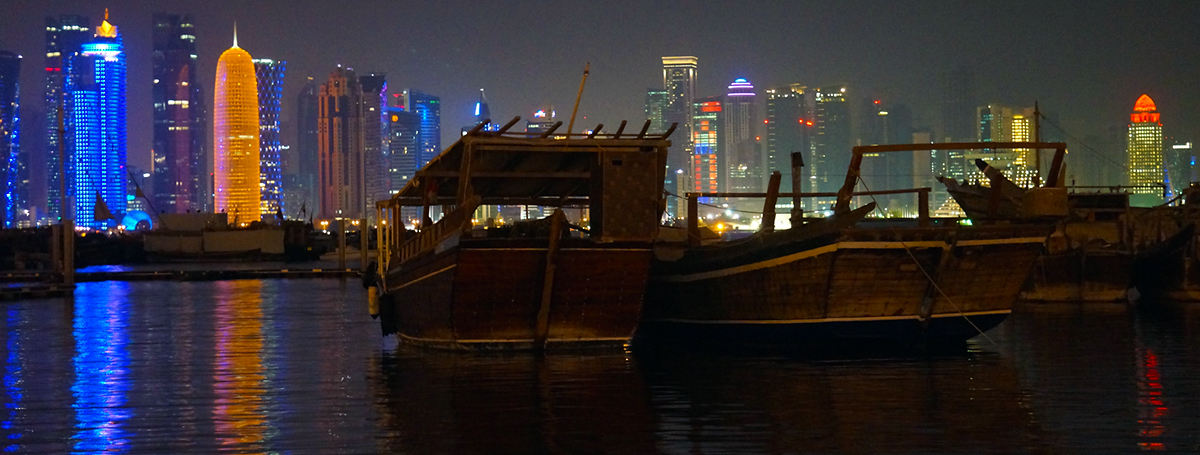Winter in Cairo is as cool as the slick marble that surrounded us when the sun is absent.
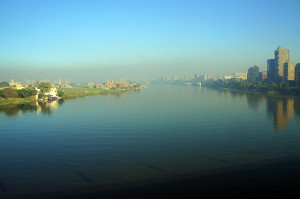
Nile River, Cairo
After a hot breakfast and a pot of coffee, we found Mohamad and Mahmoud waiting for us just outside the lobby at 8am sharp, loaded our gear and ourselves into the cold van and headed west to Giza. As the chill wind blew through the van I could feel a cold coming on and wished that I had brought a warmer coat. Mohamad stopped mid-bridge to show us our first glimpse of the Nile River. It was a misty view in the early morning light of a city with seemingly endless vistas.
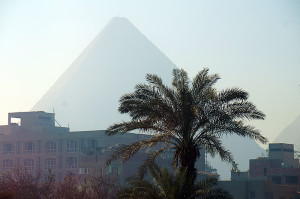
Giza
Coming from a country with a relatively young history, the contrast between architecture and lifestyles thousands of years old in backdrop to modern day life and construction always strikes me of the utmost interest. The faces of the people and the cityscape tell of a never ending story.
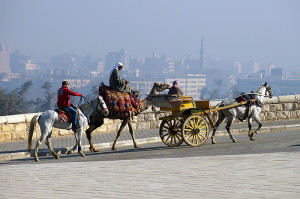
Giza
The Pyramids of Giza consist of the Great Pyramid of Giza, also called Pyramid of Cheops, a smaller pyramid called Pyramid of Khafre or Chephren, and yet a smaller pyramid called Pyramid of Menkaure, or Mykerinos. To the south west lies the Great Sphinx. It is believed that the head of the Great Sphinx is that of the Pharaoh Khafre. There are also a number of smaller pyramids believed to have been built for queens and other family members of the pharaohs. Atop of the Great Pyramid is a layer of polished limestone, burnished with a harder stone, that at one time would have covered the entire pyramid. How these were built remains a mystery, some believe by slaves, others believe the farmers took great pride in working on this accomplished construction during the off farming season. It does stand to reason that such lasting excellence was created with a degree of pride, love and mastery of ones skills.
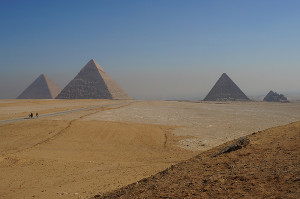
Pyramids of Giza
One imagines there to be large spaces inside filled with treasure and all the likes of which we see in the movies, but in reality, the massive structures are almost completely solid, covering the actual tombs that lie below. Some have small pathways leading to a tiny room long looted of its treasure, but still, not what I would have imagined in terms of interior scale by comparison to the exterior scale.
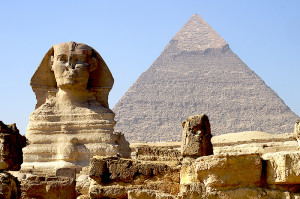
The Great Sphinx of Giza
After a morning of exploring the pyramids we headed south west to see the Great Sphinx of Giza, a limestone statue depicting the body of a lion and head of a human, standing over 66 feet high, 63 feet wide and 241 feet long, and believed to have been built during the reign of Pharaoh Khafra between 2558-2532 BC.
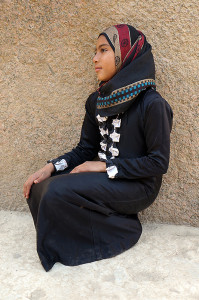
Dania
It was here that we met Donia, a beautiful little entrepreneur, skillfully working her trade and capturing our heart, she made it impossible to walk away without a purchase.
By this time, what I’m wondering is, what’s for lunch? Mahmoud was ready for the question and took us to a local eatery in the heart of Giza farmland. We had fresh made bread, potato soup, marinated eggplant, hummus, salads along with chicken and beef cooked on a grille. It was an amazing feast! Um Mahmoud prepared the bread and Um Saed prepared the meat, insisting that Stephen help her fan the fire, making him feel welcome at her home as they enjoyed good conversation while they cooked.
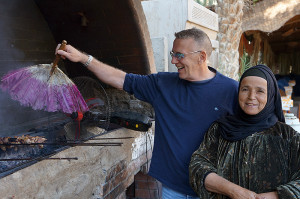
Stephen and Um Saed
Stephen asked about the ladies proper names and we learned that while they have given names, the names they go by are Um (mother of) followed by the name of their eldest child.
We enjoyed our masterfully prepared lunch, conversation about local life and some rest in the sun then were off to visit Memphis, said to have been founded by the Pharaoh Menes around 300 BC. On the way we saw the stepped Pyramid of Djoser at Saqqara. We also visited the Memphis Museum where we found the enormous statue of Ramsesses II, the third Egyptian pharaoh of the Nineteenth dynasty.
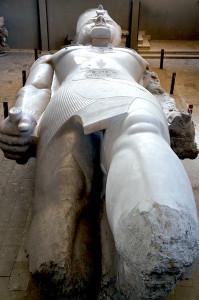
Ramses II Statue
The statue is missing his legs from somewhere below the knees, the rest of the legs can be found in the Brittish Museum in London. The open air museum displayed numerous statues of Ramesses II, the sarcophagus of Amenhotep I, the Alabaster Sphinx and other artifacts depicting an image of the ancient capital of lower Egypt’s glorious past.
We finished the day at the 3 Pyramids Papyrus Institute where we learned the ancient art of making papyrus paper from Ahmed. He showed us how to peel the papyrus stock, cut it into strips, soak the strips in water, hammer and roll them flat, place the strips in horizontal and vertical layers between linen cloths, press, then dry for 6 days. The finished paper was strong and beautiful in texture and richness of color. It is said that ink printed on this paper will never fade with time.
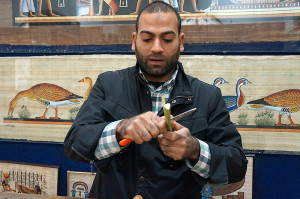
Ahmed
Being as skillful at sales as Ahmed was at making papyrus paper, we left with two prints on hand made papyrus paper with our daughters names spelled in Egyptian cartouche symbols and another stunning print of an ancient Egyptian female torso on a darker hand made papyrus paper (the longer it soaks in water the darker the paper becomes).
Next, the Egyptian Museum, Citadel Mosque of Mohammed Ali and the Royal Perfumes Palace…
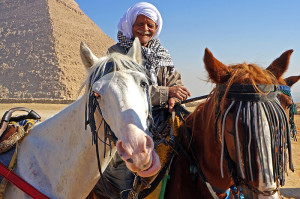
Giza
